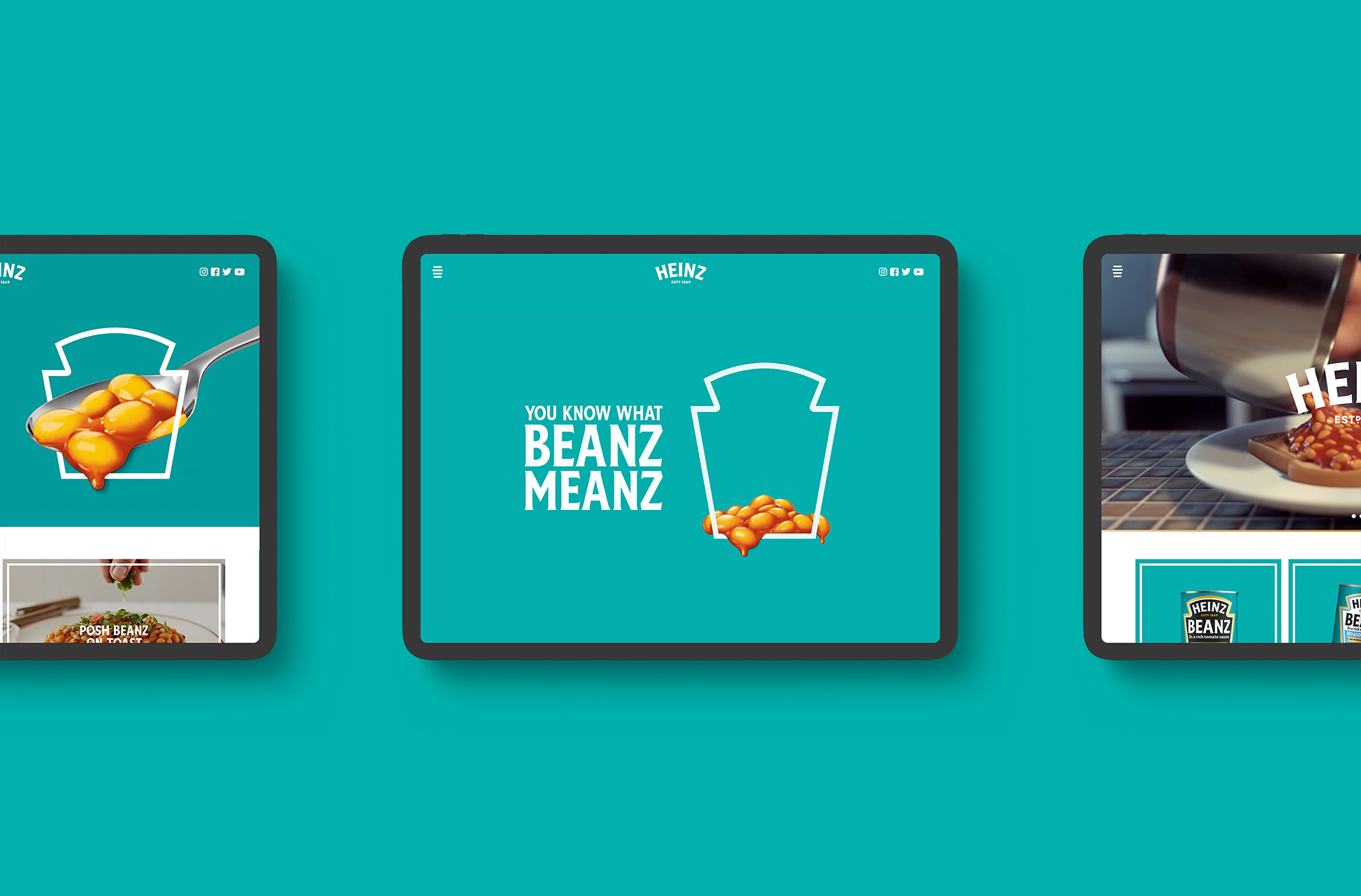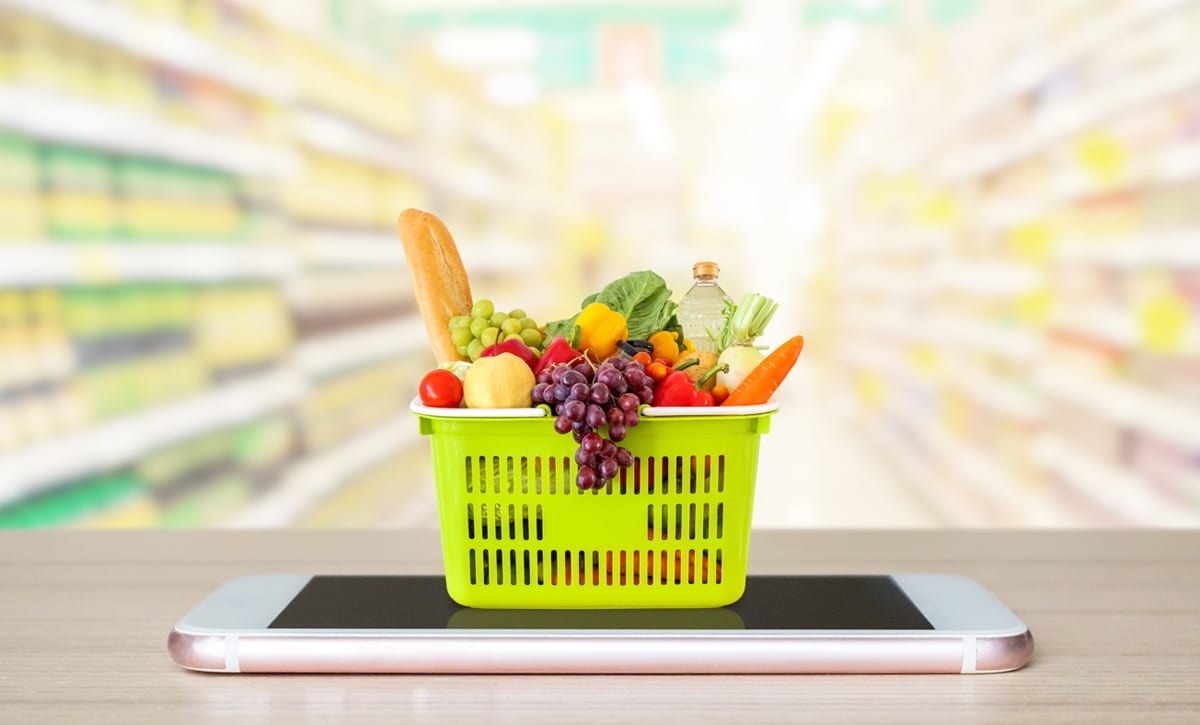There is a tendency in the B2B e-commerce sector to look across to the top B2C brands and play down the applicability of the features and techniques that make their sites market leaders. The idea that stylish sites and flashy features only fit the B2C model, while B2B should focus on the bread and butter options to fit the typically measured and professional tone of voice that many B2B brands use. This is misplaced thinking, based on the division of B2B and B2C. In reality, there are businesses, there are customers, and there is e-commerce. Shopper psychology spans across each; the features that allow B2C brands to excel in the online space are there because they work. Chiefly, personalisation.
Personalisation has always played a role in commerce. In the past, personalisation existed in retail as an in-store assistant, and in industry as a sales rep that would build a relationship with the customer over time, learning their needs, their pain points and how they liked to conduct their business. These approaches have always led to a much improved buying experience; faster, easier and more accurate. But these relationships take time to build; it’s a long term process of listening, learning and responding. And while human-to-human contact is still very much valued, digital technology, data tracking and analysis can bear the load. When implemented well, personalisation can speed up sales cycles and nurture prospects into loyal customers.
Advancements in digital technology have radically cut the time it takes to understand each individual customer and provide a personalised commerce experience. This technology is widely available, often built in to your content management system; all businesses now have the ability to implement personalisation strategies into their marketing and commerce efforts. This is good news, seeing as smart personalisation engines used to recognise customer intent can lead to an average profit increase of 15%. The flipside to this, is that personalisation has moved from an added benefit of certain businesses to an expected feature across every experience. 33% of consumers abandoned a business relationship last year because of a lack of personalisation. This is a necessity, not a nice to have feature.
Utilising account specific data
When starting to think about how your business can use personalisation in its commerce sales funnel, begin by thinking about how the company can collect data about customers and visitors. It’s important to begin with data capture, as the implementation of features depends on the type of data collected.
For specific customers, data primarily comes through the account creation process: job function; past purchases; which pages they have previously visited on the site; their dwell time; on-site search history, and so on. If the current data collection on account creation is limited, build this out for future customers and consider requesting current users to update their profile with more information upon their next login. Rather than hiding the motive, make it clear that the company will be using the data for an improved, personalised shopping experience. This clarity will boost the numbers opting in to data sharing, as it clearly offers a mutually beneficial exchange.
Putting this in place, electronics manufacturer Omron was able to create a site that adapts to the needs of each visitor. By using information on the job function of each logged in visitor, the Omron site could dynamically adapt and funnel distributors, systems integrators, Omron employees and end users to the appropriate pages. This is a simple solution, using just one piece of data to adapt the site, but it has a major impact, with the ability to scale up personalisation based on further gathered information.
Making use of automatically collected data
Thinking about data capture also means thinking about the information that is automatically collected when a user visits the site, whether logged in or not. Their location data, the search term that brought them to the site, their onsite user journey – all of this information can inform your personalisation approach. Personalisation based on this information is subtle, possibly unnoticed as the visitor explores the website. They may not recognise the personalised experience, but will come away thinking that the shopping experience was quick and easy.
This also applies to classic customer segmentations, a general grouping based around shared behaviours. Personalisation doesn’t always mean single individuals. These segmentations can be useful when thinking about broader data automatically collected by new visitors to the site, as the depth of information isn’t there to create an individual response. As an example, an electronic parts company could use site search data to establish a segmentation that prominently displays associated purchases to visitors.
With an understanding of how data is collected, your business can begin planning the execution. At this stage, think in terms of what can be done onsite and off-site. While it is easier to control the onsite content and design, focusing solely on the website can see businesses missing out on the opportunity to fine tune their contact with customers through advertising and direct messaging.
Dynamic content
Onsite, dynamic content is a useful tool to make use of. This is content that adapts based on the data that is fed into the CMS, whether it is account data, previous purchases, search terms, and so on. The most obvious use is often found in the leisure and tourism space; if a visitor clicks on a number of pages relating to Italian destinations, the site can adapt the background images on more general pages to show Rome, Venice and Florence.
In the B2B space, dynamic content can be used to display relevant information, based on what is known of the customer. If they have listed their job function as logistics, they can be shown contextual information on delivery times and options, while a member of the finance team will see more about pricing options and different payment plans.
Accelerating everyday tasks
Speeding up common processes is another use, particularly helpful when looking to keep long term customers engaged. There will be a number of actions that returning customers have to redo with each visit, the most obvious example being adding items to the basket.
This is particularly important for B2B commerce as orders can be large and complex, and customers are more likely to repeat their orders when compared to B2C. Improving reordering was a key feature when developing Brenntag’s new commerce platform, Brenntag Connect.
As a chemical distributor, Brenntag has a strict process when allowing new customers to use their service. Customers are typically placing large, identical orders, leading Brenntag to create an automation service that places repeat orders and provides relevant contextual information when customers need to make an adjustment. This is a clear indicator of why it’s important to remember that personalisation is not fitting to how customers buy, it’s fitting to how customers behave.
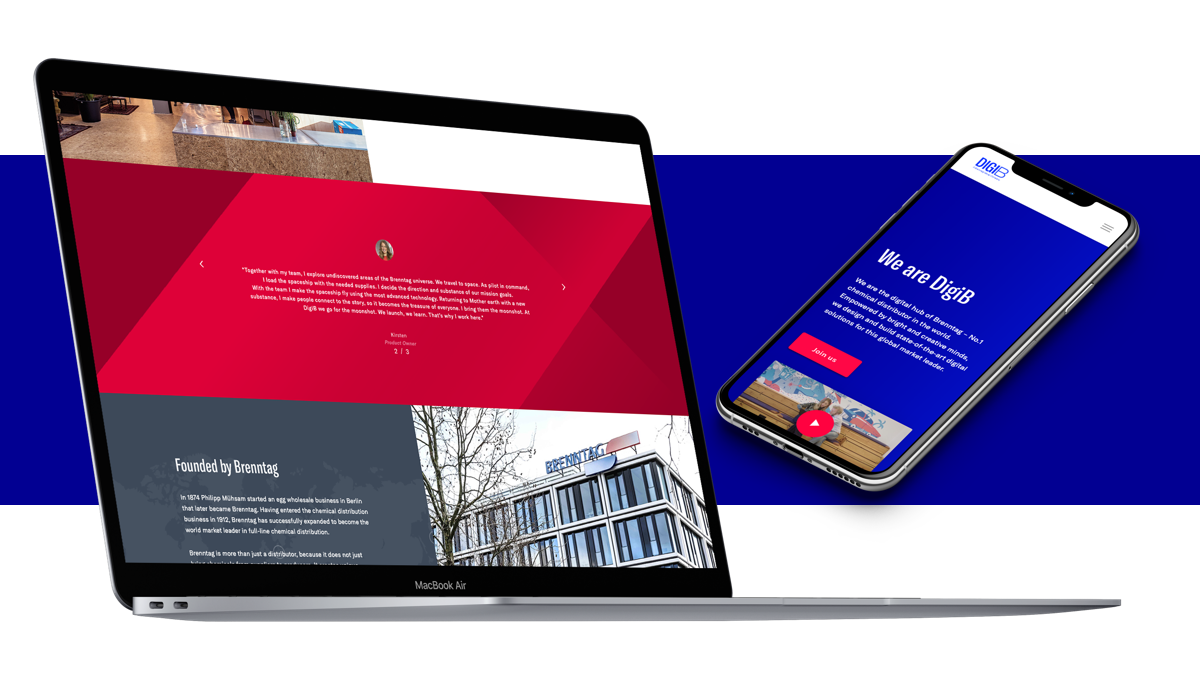
Supplying more information to upsell
When customers are returning to reorder from your company, there is an opportunity to upsell existing products and promote new ones. This goes beyond ‘customers who bought X also bought Y’. This form of personalisation should aim to suggest alterations and explain the reasoning, based on the specific customer’s order. Think of it as a digital representation of the sales rep relationship, understanding the developments in a customer’s business and reacting with new solutions.
It can also be developed into a website feature, an interactive problem solving flowchart or chatbot that allows visitors to input their problem or need and see what solutions the company would suggest.
Optimising site speed
Not every on-site personalisation improvement is interactive and clear for customers to see. Adding in predictive loading is one example, a feature that speeds up the load time for each page on your site based on similar customer journeys.
Customers may never realise that the site they visit uses predictive loading, but they will notice if a site is slow to load. Selling needs to be as smooth as possible; slow loading leads to a larger bounce rate. Installing features, like predictive loading, that uses the information gathered when analysing personalisation can ensure the process never stalls.
Off-site actions
Personalisation also applies to actions that the company makes off-site. Email is one area, automated workflows for customers that left the site without checking can bring them back, boosting conversion through reminders and specialised offers. This can similarly be used for surrounding purchases, following the frequency of repeat purchasing or the typical time it takes for a customer to branch out to a new product.
Also consider how the purchasing journey exists across different touchpoints such as apps, social media and face-to-face meetings. Is it easy to bring up the customer profile and optimise their order based on this information? This kind of integration creates a seamless experience, perfect for B2B’s longer, omnichannel purchasing journeys.
Facilitate an easier commerce experience
In each recommendation, the end goal of facilitating a faster, easier, more accurate commerce experience remains the number one priority. By hitting each aim, the business makes each customer more likely to checkout, more likely to return, and more likely to talk to people in their industry about how great purchasing from your business is. These improvements build up, a snowball effect that ultimately results in increased sales and larger, loyal customer base.
More Insights?
View all InsightsQuestions?
Managing Director UK
Brian Robinson
We’re all well aware of the growth of e-commerce over the past couple of years, but it wasn’t only for B2C, B2B saw a huge surge in commerce too and arguably saw the biggest change. The global B2B e-commerce market is valued over 5 times higher than the B2C market, at a huge $14.9 trillion.
The B2C market has set the benchmark for e-commerce standards, and despite their differences, there’s plenty of inspiration and learnings manufacturers can take from B2C brands. Especially as the line between the B2B and B2C customer is slowly fading, what was classed as nice to have in B2B is now expected thanks to the experience B2B buyers are receiving as B2C customers.
Here we take a deep dive into the new B2B buyer and the key learnings manufacturers can take from B2C to supercharge their commerce experience.

The rise of e-commerce in manufacturing
Research from Mckinsey, shows that e-commerce is now the highest revenue-driving sales model accounting for 18%, which puts it on the same level as in-person sales and ahead of all other sales channels.
The shift from traditional selling isn’t slowing down, it’s expected that by 2025, 80% of all B2B interactions will happen digitally. But the move to digital isn’t a transition that can happen overnight, manufacturers need to start their digital transformation now in order to reap the benefits further down the line.
When it comes to commerce in manufacturing, it is usually more complex than B2C due to a number of factors, from long-buyer lifecycles to high value purchases. However, e-commerce has the power to transform manufacturers by moving them away from traditional ways of doing business and giving them a digital ecosystem where they can optimise their customer journey and enhance their e-commerce experience.
DEPT® recently helped Jotun migrate all 91 variations of its B2B and B2C websites, to a new Optimizely solution. Due to two completely different audiences (B2B and B2C), different solutions were implemented to ensure the correct and relevant content is displayed to the customers. Specifically for the B2B customer, in order to deliver personalised features, content and applications to the relevant user, DEPT® built an IAM (identity and access management) solution to define high level access to the portal, allowing Jotun to deliver a personalised B2B commerce experience.
Building digital experiences customers now expect
A key driving force behind the rise in manufacturing commerce is the evolving B2B customer. The frictionless digital experience they are accustomed to as a B2C customer is now expected throughout the B2B buying journey. They want suppliers to be present across more channels than ever before and deliver a personalised experience on them all. Also, convenience is now key. They’re welcoming more automation and self service, giving them greater control of the process, whether that’s from placing orders to paying invoices. A new B2B customer is formed.
Research by McKinsey showed that 62% of B2B customers would prefer to reorder products online and 60% found remote sales as effective as traditional. However, according to a recent report, 52% of B2B customers experience frustration with online B2B buying – lack of functionality tops the list as the biggest obstacle, closely followed by load speeds and difficulty finding products. And, this isn’t good news for manufacturers, as a huge 90% will turn to a competitor if customer experience is not up to scratch on a supplier’s digital channel. On the plus side, they are willing to pay a premium for a great commerce experience.
However, these figures aren’t surprising when only 18% of companies say they have a customer-centric strategy. This needs to change. Manufacturers must start to take a leaf out of B2C’s book and move away from being product focused to more customer-centric. But, to do so they need the right digital solutions.
If these stats alone aren’t a good enough reason to up your commerce game, I don’t know what is! Here are 3 key learnings manufacturers can take from B2C commerce to do just that.
3 learnings B2B can take from B2C e-commerce
01 Personalisation
From experiencing personalisation as a consumer, B2B customers are now demanding the same tactics are used. According to Accenture, 73% of B2B executives have a growing number of customers who are looking for their interactions with the brands to be more personal. Although this will differ quite substantially from B2C, with the amount of data at your disposal, you can deliver personalisation that is unique to their buyers’ journey. Due to most business coming from repeat orders, manufacturers will arguably have access to more customer data. This includes customer accounts with an organisational structure, and previous orders, which should allow manufacturers to predict the future needs of their customers. Customer loyalty is key in B2B and gives a podium for personalisation to shine. For example, capturing data and adopting the use of artificial intelligence to help anticipate customer preferences and needs.
Gone are the days of one-size-fits-all and generic messaging. Personalisation allows manufacturing companies the opportunity to engage with their customers in a much more relevant way, by leveraging customer data, preferences and online behaviour. B2B commerce gives manufacturers the power to configure personalised catalogues and pricing, as well as provide customers with tailored product recommendations all in real-time. And, it doesn’t all have to happen digitally. The sales team will be able to see customer activity online, which in turn will allow them to provide a personalised in-person experience too. This has the power to set their experience apart from competitors.
And, if the success reaped by B2C brands has anything to go by, it has the potential to raise revenue and increase loyalty. 80% of consumers are more likely to buy from businesses that offer a tailored experience and 70% say that how well a company understands their individual needs impacts their loyalty. Those companies that personalise sales and marketing more closely to the customer are more likely to have gained market share in 2021, with 75% of those offering direct one-on-one personalisation reporting a move. Additionally, 44% of customers who experience personalisation say they will become repeat customers.
02 Seamless, multi-channel experience
There have never been more channels used by B2B buyers than now. As of December 2021, McKinsey reported that B2B decision makers are using 10 channels to interact with suppliers, up from 5 channels in 2016. B2B companies that are selling through more channels are also likely to have gained market share, 72% of those who used 7 channels reported an increase. Omnichannel is here and manufacturers need to keep pace and be wherever the customer is.
When the B2B customer is trying to complete or satisfy an order, the delivery of content should be unobtrusive and rapid. The ability to augment product details with content and upsell/cross-sell is now a must-have. Whether that’s through a website, app or in-person.
Just like B2C, B2B customers expect a seamless UX that guides them through their journey. Yes, the B2B buying journey is often much longer and more complex than B2C, but that’s no excuse. Manufacturers need to be giving the customers the right information, at the right time, in the right place and in the right format, such as 360 product views or product video demonstrations, in order to make their lives easier and provide a great user experience. Whether that’s the ability to track an order in real-time or accessing a customer portal to self-serve, the right technology can contribute to a seamless user experience, whatever their need.
03 Integrated e-commerce tech stack
Launching a B2B e-commerce site on its own just won’t stack up, it’s essential to adopt an integrated ecosystem to truly reap the benefits. So, it’s time to say goodbye to those legacy systems and invest in a tech stack. However, manufacturers will need to take it a step further than B2C due to its complexities.
An increase in B2B touchpoints means a manufacturer’s customer will likely order through different channels, whether that’s through the ERP system or through a sales rep. Therefore, the tech stack must be able to facilitate orders however they come in. Another consideration is the complexity of the supply chain. Certain orders will require significant supply chain requirements, so it’s essential for each different system to be integrated in order to keep up with demand.
A high level of integration will also help to provide a holistic view of the customer and their journey as well as operational. Marketing automation and analytics are areas where B2C have excelled in and are key features to consider, especially to deliver on a customer-centric strategy, as well as the marketing of new products and ranges to existing and prospective customers. So the full features of an experience platform are not to be overlooked for B2B, in fact some manufacturers have considered these features as important as their catalogue.
But, not all platforms are created equally, so ensure you choose the one that is right for your business goals and outcomes. Unsure how to decide on the right platform? Find out more here.
This is only touching the tip of the learnings manufacturers can take from B2C. At the end of the day, all B2B customers are also B2C customers, so expectations will continue to transfer between them both. And, the digitisation of B2B commerce isn’t slowing down anytime soon, so it’s on manufacturers to keep up with the evolution of digital commerce or risk being left behind. Those willing to invest will reap the benefits.
To find out how we can help you to take advantage of the learnings from B2C and take your B2B commerce function to the next level, get in touch today.
More Insights?
View all InsightsQuestions?
Managing Director, Design & Technology UK
Lizzie Powell
The B2B marketplace boom is just beginning. A new study projects B2B marketplaces will account for 30% of all global online B2B sales by 2024; estimated to reach $3.6 trillion up from $680 billion in 2018. There are two core pillars contributing to the surge of marketplace selling: marketplace syndication and marketplace creation.
How marketplaces fit into the B2B buying journey
Most B2B purchases involve a chain of decision-makers and follow a complex, nonlinear path where the readiness of digital information is appreciated. The buying journey may be difficult to map, but the initial step is clear: an overwhelming majority (89%) of B2B customers begin their process with a search engine and conduct at least 12 searches prior to engaging on a specific brand’s site.
Marketplaces have become a key avenue for vendors to research their options and connect with multiple brands and products at once. “Opening up the business to comparison is one of the biggest push backs from B2B sellers when it comes to marketplaces, but we’re way past the era where a comparison is restricted,” said Jonathan Whiteside, Principal Technology Consultant at DEPT®. “Even before marketplaces, your customers were accessing multiple supplier websites across monitors and devices to create their own comparisons. By participating in the process, rather than resisting, you’re making it easier for them. When it comes to customer experience, you have to give an inch to get their attention and prove value.”
A customer previously unknown to your brand may now be discovering your products. “If a builder is looking for a home appliance, they’re searching for options that match specific criteria, whether that’s related to size or energy consumption, they’re able to easily compare a Bosch product vs a Samsung vs models from a new manufacturer. Being considered alongside premium vendors adds credibility and gives your brand a chance to win new business. Use marketplaces as an inbound channel.”
A new channel for lead generation
The main advantage for B2B sellers joining marketplaces is their ability to reach a large, captivated audience. Marketplaces have teams dedicated to keeping up with trends and search strategies, refreshing pages regularly and optimising content. When combined with the range of brands updating offers and adding or removing products, SEO gets driven up which leads to more inbound traffic.
B2B often focuses on business retention rather than acquisition. Investing heavily in developing consumer loyalty is a great growth strategy. Despite B2Bs having a lower number of customers compared to B2C businesses, the transaction value is much higher, as customers are likely to order in bulk and are often tied into long term contracts and subscriptions. “Marketplaces are actively pursuing new customers, let them supplement your marketing strategy by directing prospects to your dedicated platform. Follow the funnel from search to discovery, continuing the message by clearly communicating your unique proposition and focusing on engagement.”
Whiteside added: “Becoming an expert advisor is one way for businesses to stand out from their competitors in the marketplace. Hone your digital engagement skills and provide support around your products and insight into the industry you operate in. Marketplaces may be leading the way for convenience, but B2B specialists run on trust and long-term relationships; don’t miss the chance to create a lasting business partnership that’s mutually beneficial.”
Selling in tandem with marketplaces
When 66% of distributors and 53% of manufacturers say they are losing revenue to marketplaces, it’s time to work with these commerce leaders. Pinpoint how their strengths in fulfilment, standardised delivery, immediate visibility and compliance can help maximise your overall sales and distribution strategy. As a manufacturer, the opportunities are fairly straightforward to optimise warehouse space: combine several low margin products into a high margin bundle and offload slow-moving inventory, surplus or overstock items, as well as discontinued product ranges.
It’s a lot more complicated for distributors since a lot of their value is tied to their ability to fulfil orders in a unique way that often involves their own delivery fleet. “If you’re sending a big pipe for a water supply company, you know how to deliver that product in a special way, so keep that on your delivery system, but maybe let go of the nuts and bolts that fit into standard boxes. The brand awareness benefits and efficiencies of the marketplaces are worth it if you’re sending standard items. Work with them sometimes, but preserve your value.”
Mapping the B2B marketplace landscape
Alibaba and Amazon are the world’s largest B2B online selling platforms. Both companies are making significant progress, with Amazon Business hitting $25 billion in annual sales and growing 1.6 times faster than Amazon itself last year. The Chinese tech giant Alibaba managed to gather 10 million B2B buyers on its platform from 190 countries. And is now outpacing Amazon, Google Cloud and Microsoft with a 60% year-on-year rise in revenue in the third quarter of 2020.
More than 80% of the 600 business buyers Episerver surveyed said they use these two platforms to start their research. These B2B marketplaces have been celebrated for creating alike B2C experiences and simplifying corporate purchasing. Their success has opened the floodgates. There are now over 300 B2B marketplaces in Europe, up from a mere 20 back in 2010. The majority of these marketplaces were started within the last five years, and Forrester Research predicts that hundreds of new B2B marketplaces will continue to launch in industries as diverse as chemicals, machinery, electronics, agrifood and aerospace.
“B2B marketplaces are still very much in their infancy, and there are a lot of opportunities for advancement through tech innovation and customer activation,” Whiteside commented. “The evolution of B2B marketplaces will more be more focused, offering less commoditised, more unique goods or services sourced for a particular industry. These marketplaces will have more complex workflows and may be tougher to set up as opposed to traditional marketplaces due to their inherent complexity though, for this reason, they will also be more defensible.”
Opportunities for marketplace creation
The demand for niche B2B marketplaces keeps growing, providing fertile ground for marketplace giants to specialise in verticals, industry leaders to create multi-vendor e-commerce platforms, or venture capital-funded digital native start-ups to swoop in. The more sector-specific and tightly seller-focused emergent marketplaces are, the more targeted traffic they’re likely to generate and successful they’ll become.
According to Whiteside: “If you’re already a leading manufacturer or distributor in a particular area such as bus parts or chemical components, launching a vertical-specific marketplace is a logical next step to reaffirm your market position, open up new revenue streams and attract serious buyers. Having a well-established company domain will boost the launch, while your industry knowledge will ensure satisfaction and longevity; simplifying the buyer journey and creating new sales opportunities for sellers tailored to the unique needs of their sector.”
Follow in the footsteps of vertical leaders who have established their own B2B marketplaces. In aviation and aerospace Airbus, Thales and Honeywell; Siemens in trains; Toyota Material Handling in forklifts; CheMondis for chemicals; Conrad in electronics; HP Enterprise for IT supplies; and Tetra Pak for food and beverage.
Just Eat launches a B2B marketplace
Following the merger between Just Eat and Takeaway.com in spring 2020, Just Eat Takeaway transformed into a global platform that operates in eleven countries, serving over fourteen million customers annually. The company decided to accelerate its digital transformation and partnered with DEPT® to launch a new, innovative B2B marketplace that caters to the needs of restaurateurs by leveraging the wealth of data the company has at its disposal.
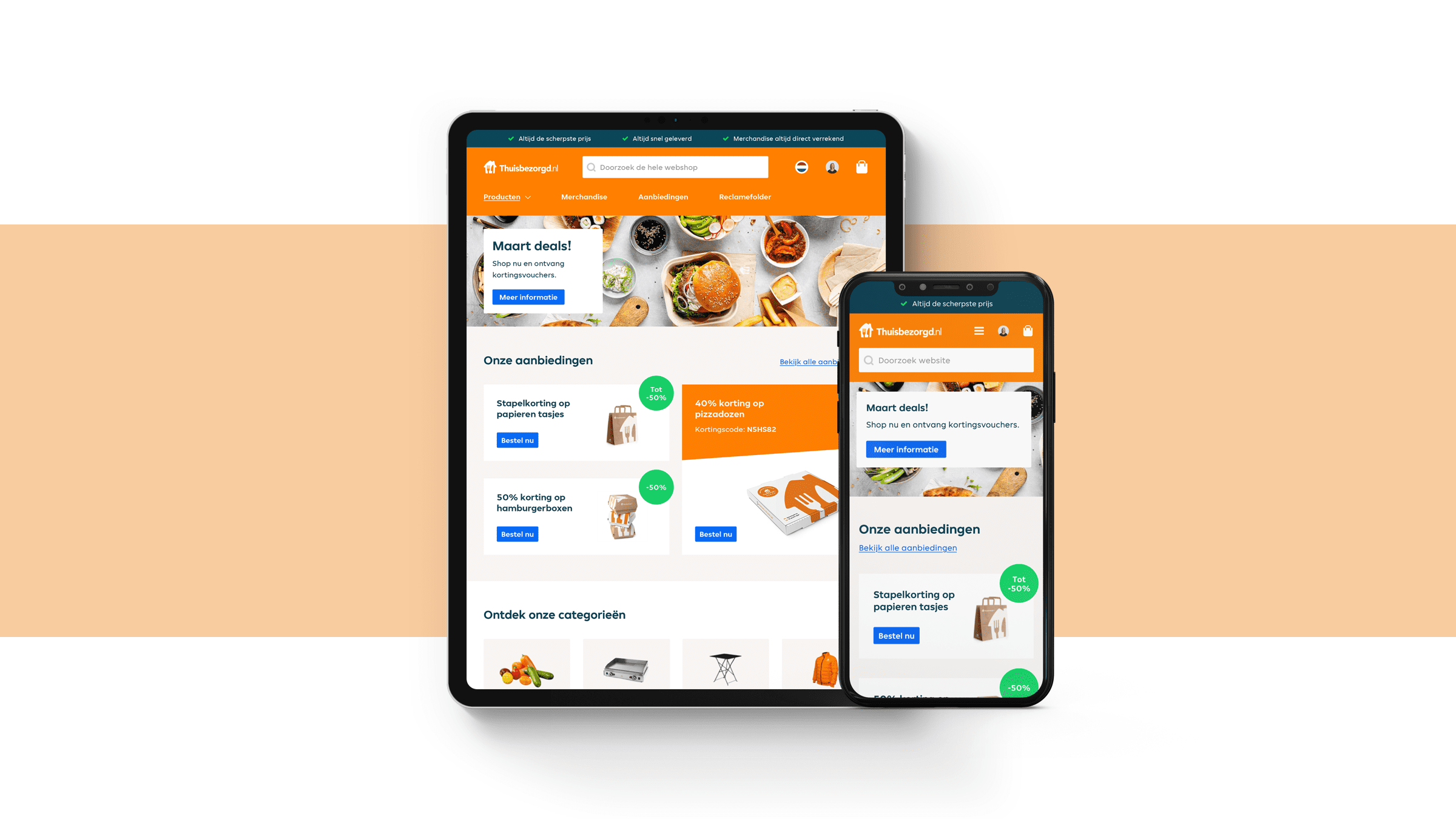
In addition to its customer-facing marketplace facilitating food delivery, the company also enables restaurant owners to purchase both food and non-food items from third-party sellers. Powered by commercetools, the Just Eat B2B marketplace provides regional insights into consumer demand to help local restaurants better tailor their menus based on local supply and demand. DEPT® designed a simple navigation system, enabling the marketplace to easily visualise each order in line with each restaurant. With a headless setup, it was simple to integrate Adyen MarketPay, enabling restaurateurs to make one payment which is then divided into the accounts of each seller, as well as connect external channels to the existing commerce environment. These digital innovations are renewing Just Eat’s position as a leading, global food delivery service.
Prep for transformation
Standardising data in a consumable format is the first step towards unlocking the value of marketplaces, whether you’re planning to list products on an existing one or create a new multi-vendor platform. Get a head start by developing a Product Information Management (PIM) System to centralise, manage, and enrich your product information as it gets distributed to sales channels. Don’t skip this step. It will become even more crucial once you get deeper into creating personalisation strategies focusing on cross-selling, upselling and boosting aftermath sales.
We’re here to help, contact a member of our team to discuss your business needs and how marketplaces fit in.
More Insights?
View all InsightsQuestions?
Managing Director, Design & Technology UK
Lizzie Powell
Spurred on by the coronavirus pandemic, an increasing number of B2B manufacturers are exploring the possibility of going Direct to Consumer. For manufacturers and consumer packaged goods brands, selling directly to their end consumer means developing existing processes and creating new capabilities. In the latest edition of our DEPT® Talks Live series, DEPT®’s Principal Consultant, Jonathan Whiteside, took the audience through the what, why and how of going D2C in the B2B manufacturing space.
Why launch a D2C
There are three main reasons to go Direct to Consumer. The most obvious is improving margins. D2C allows manufacturers to sell at retail price, rather than wholesale, increasing the profit on each product. It’s important to not to see this as cutting out the middleman. Instead, look at D2C as a supporting channel. Resellers play an essential role in the discovery, providing an audience that is interested in the product, an audience that the D2C model follows up with.
Second, D2C provides a new form of brand experience. From discovery to delivery, your brand has total autonomy over how the audience connects with your brand. In the modern market, experience operates as a key differentiator between each offering. Packaging, speed of delivery, ease of ordering the product, customer support, each of these interactions can be managed by your company, creating the opportunity to offer customers a market-leading experience that drives their future preference.
The third is it allows brands to gather more insight. By involving the business in every step of the sales process, from discovery through to returns, a company can gather more data on consumer behaviour, trends in their industry and general customer feedback. This is useful information when companies look to improve their offering, adapting it to meet new customer demands and recent shifts in what the market wants.
Why brands should act now
Why is it important at the moment? We’re at a point in time when there is an extremely low barrier of entry into e-commerce. Through the use of commerce platforms and online marketplaces, it is easier than ever to start your own e-commerce offering. Equally, it is easier for disruptors. Instead of a capital intensive set-up, many commerce platforms now provide a ‘pay as you grow’ model. Online only or online-first brands have grown through the use of commerce platforms, selling the same product but through an e-commerce only model, achieving each of the three goals mentioned earlier.
As a manufacturer entering this space, creating a D2C offering is not about being competitive with existing sales channels. Done well, D2C expands the audience through wider channels, adding to the sales figures rather than cannibalising current customers.
COVID-19 has pushed the need for e-commerce options. Physical sales decreased during the pandemic, while e-commerce boomed. This is an acceleration of existing trends; over the past decade, we have witnessed the slow fall in high street sales. Store closures have forced experimentation, causing businesses to act fast, faster than we’ve seen in recent years, despite the obvious trend of brick and mortar losing sales to e-commerce. Necessity has pushed previously offline companies to have a go at D2C. The interesting result is that In a disrupted situation like this, existing shopping habits entirely reset.
One FMCG manufacturer that has made this move is Pepsico. Having never sold directly to consumers, Pepsico moved quickly to set up two D2C channels, one for their snacks and one for their cupboard filler products. These two channels allowed Pepsico to support their existing channels through the crisis.
How to set up a D2C
When considering how the business can put in place a D2C model, begin by thinking about your capabilities across production, marketing, fulfilment and data. Production will already be well developed as a manufacturer. Marketing may also be well built, with strong in-house or outsourced SEO and advertising capability.
Fulfilment and data use are more likely to be new additions. How to take orders, how to show inventory, take payment, returns, and customer care, these are new challenges to plan around with. Similarly, managing, interpreting and applying data, particularly new data streams entering the business, requires a digital solution to maximise the outcome.
To meet these new challenges, brands need to choose the right platforms which match their needs. So, begin by researching e-commerce platforms that provide a pay as you grow model. These SaaS solutions avoid the difficulty of a capital intensive starting point. Services like Salesforce, CommerceTools, BigCommerce and Shopify Plus each have a distinct proposition for businesses.
Each platform provides the tools you need to provide a modern e-commerce offering. Simple features are ready built, like basic product pages and baskets. These platforms are typically good at integrating with existing systems, like an ERP inventory management system or any marketing tools used by the business. With this plug and play design, the speed of setup is much faster.
When selecting a platform, make sure the commercial model scales with your business. As the current market is built around ‘pay as you grow’ offerings, this can make all the difference. Also, ensure that the platform is built to achieve your KPIs for a D2C channel. If personalisation is an important feature, ensure that there is software in their offering to build personalisation into the service.
Next, think about how your offering can be built. Don’t over-engineer the solution and add too much complexity. Agility matters in this current market, aim to get an e-commerce site online and prove it works by taking revenue, rather than perfecting a service that includes every single product.
To simplify the updating and upgrading process moving forward, make use of headless commerce-enabled software to connect each front end into a unified back end. If the business already has tools like a CMS, make use of them to speed up the process of content creation and ease asset management. Choose the platform with pre-existing integrations that you can use.
Create a unique experience
Lastly, think of your brand experience. What do you want visitors to the site to take away? E-commerce experience is your brand experience. It needs to be frictionless and fast. Can you provide quick delivery, easy product discovery, simple returns and customer support? If these points fall down, it reflects badly on the brand itself. Again, this shows the importance of starting a little smaller and testing, ensuring that every function works.
Working with Bugaboo, DEPT® knew the importance of making the brand experience come on alive on site. Using Salesforce Commerce Cloud, DEPT® built a new website with unique and customisable elements for the stroller giant.
D2C enables brands to have more data at their disposal
Data will be ever-present when planning this project. With full autonomy over the entire manufacturing and sales journey, your business can close the sales loop. In the reseller journey, leads are passed on from manufacturer to reseller. In D2C, you own your e-commerce sales, meaning everything can be measured and therefore optimised. Conversions can be attributed to designs and behaviours. Insights can be found in interesting places, such as the on-site search bar. It can reveal what customers are searching for and how you can perfect your product line.
For example, an on-site, a feature like Triumph’s bike configurator is there to personalise a bike purchase, but also to provide an insight into consumers. What accessories are popular, what are the most common combinations, how can Triumph create offers and suggestions based on these common choices?
Another option? Marketplaces
Marketplaces are also worth considering. Amazon is integral to this, playing a role in each e-commerce journey, as a point of discovery, a price comparison hub or a checkout. Listing on Amazon can be the fastest way to market for new D2Cs looking to broaden their audience beyond website visitors.
There are two choices on Amazon, being a seller or a vendor. Sellers sell through Marketplace, manage their own products and inventory, set their pricing and ship the goods. In return, your business gets all the data from the sales journey. There is a monthly fee to use seller central, and there are some minimum requirements to meet, around delivery time scales and returns.
The other option is Amazon vendor central. Manufacturers sell to Amazon, who then operate as the sole merchant, managing end to end, setting the price and advertising the products. This service is invitation only.
Alternatively, you may find that the best approach is to build a stronger B2B wholesale offering: a self-service, frictionless offering with consumer app quality. Working with Brenntag, DEPT® built a chemical distribution portal that allows Brenntag to unite a fragmented sales channel in one space, providing secure, easy reordering of chemicals.
Harness the power of D2C
Each business will adapt to the D2C model in a different way. As a manufacturer, now is the time to take the plunge and start to plan the first steps your business can take to offering that direct channel, the test case that proves the system. With proven success, more and more opportunities will arise.
More Insights?
View all InsightsQuestions?
VP of Marketing, EMEA
Mellissa Flowerdew-Clarke
What are the biggest challenges in the B2B market? Speed, reliability, simplicity and reasonable prices. What is Amazon particularly good at? Fast delivery, reliable communication, simple ordering processes and unbeatable prices. As far as delivery processes are concerned, Amazon is on the move by land, air and sea. Amazon has already taken the step from B2C to B2B in the US – now Germany is being considered.
Amazon Business Facts
- Launch in Germany December 2016 with B2B marketplace Amazon Business
- The starter range comprises 100 million products
- 5 million articles on the manufacturing industry and trade
- The number of B2B merchants is not yet known
- The products are offered directly from Amazon
- B2B sales in the US have been running since 2015 – more than 45,000 retailers are online
- External trading partners can make their goods available to Amazon’s business customers (not only manufacturers and wholesalers)
Advantages of Amazon Business from a seller’s point of view (Sell-side)
- Increase in turnover and market share (expansion of the product range for B2B needs)
- Acquiring and retaining new customers through efficient and automated ordering processes
- Personalisation and data collection for personalised offers
- Special Amazon Business Marketing Campaigns
- Wide range coverage for the B2B segment from a box of printing paper worth 1.00€ to large machines such as hydraulics brakes worth 60,000€
- Integration of up to 18 general and separate quality-related information in the offers is possible, for example, ISO: 9001/AS: 910
- Assignment of National Stock Numbers (country-specific product labelling) for customs classification
- Exclusivity – Special offers are only visible to Amazon Business customers
Business models on Amazon Business
Amazon Business Vendor
In this program, Amazon plans directly with the supplier and lists the products in its own stock. Amazon is in principle a wholesaler, which resells the products to business customers via the Amazon Business Platform:
- Invitation only by Amazon
- Suitable for major manufacturers, well-known brands and selected wholesalers
- The supplier is responsible for the product listing selections
- Amazon determines the sales price
- Shipping by Amazon Prime
- Special marketing opportunities
- Higher sales in the vendor program, similar to the B2C segment
Amazon Business Marketplace
In this program, the products are sold by the supplier directly via the B2B platform:
- The provider determines the prices personally
- Independent determination of product listings
- Total control of sales activities
- No contract negotiations with Amazon
- Direct contact with the customer
- Amazon Business is only the provider of the infrastructure
- Variable sales fees and monthly royalties
Amazon Business Marketplace with FBA (Fulfillment by Amazon)
- Sales via the Marketplace with shipping through Amazon FBA
- Products are the property of the seller
- Use of Amazon warehouses
Marketing measures with Amazon Business
Marketing measures also differ from B2C in terms of strategy development. The professional design of the marketing measures is essential for Amazon Business and should be carried out by experts in order to generate better performance and less divergence. It is important for Amazon Business to know the different B2B marketing campaigns on Amazon Business in order to successfully position their own products in these campaigns.
Choose the right B2B advertising strategy:
- Clear structure and systematics across all campaigns
- Appropriate naming conventions
- Detailed keyword analyses
- Optimization of products (determining relevance factors)
- Specification of negative keywords
- Monitoring and selection of products
- Clear targets for sales and costs
- Optimal control of CPC bidding
Content optimization on Amazon Business
Product information differs in B2B and should therefore be adapted to individual needs. Complex products exist in the B2B sector and B2B buyers tend to be more fact-oriented and critical for operational reasons; they like to use videos, product brochures with instructions or product evaluations prior to purchasing. B2B content requires a high degree of individualisation. In this case, it is important to know the search behaviour of decision-makers and business customers and to cover them with a wide range of keywords.
In both B2C and B2B, the purchase process starts with the necessity or need. Only the search for information and the evaluation of alternatives in the B2B segment is more formal and structured or more experienced. It is extremely important to know the difference between the influencing factors and processes and to integrate them into the content.
Advantages of Amazon Business from a business-customer perspective (Buy-side)
- Comparison of several offers
- Invoice purchase for qualified buyers with 30-day payment term
- Companies can access the entire Amazon Business product catalogue through technical integration into their own ERP system
- Millions of products especially for the B2B sector are available within one day
- In the US, it is possible to search via MPN, UNSPSC (United Nations Standard Products and Services Code)
- Only Amazon Business customers can view prices for a variety of items
Application cases for companies of Amazon Business (Buy-side)
Authorized persons or groups purchase for the company:
- Savings for B2B customers through quantity discounts
- Amazon Business Accounts include pricing and volume discounts on millions of products in a wide variety of categories
- Free delivery within 2 days of a purchase priced 29€ or greater
Automated approval processes for purchasing managers and administrators:
- Overview of all participants and groups regarding the approval process defined in Amazon Business Backend
- Administrators can define permissions… As soon as the order total exceeds the limit, the order is automatically forwarded for approval
- Approvals can be determined individually for each person in the company from a wide variety of departments
Define payment methods:
- Administrators can define common and individual payment methods
Multi-user accounts:
- Several authorised persons for one account with different access codes
Increased efficiency through automated processes such as receiving invoices or creating payments:
- System Integration Payment
- ERP-system integration
- Supplier consolidation
- Business-only selection
The registration process on Amazon Business
With just a few clicks, you can convert your current account into a business account. A business account on Amazon differs from a B2C account on both the Amazon frontend and backend. When switching to the B2B account, additional persons and groups can be added and receive the respective account rights for account management including account information, order history, addresses, payment methods and personal data.
What effects does Amazon Business have on B2B E-Commerce?
The answer to this question depends on the observer’s point of view: On the one hand, the effects are very small; however, on the other hand, they are gigantic. Why are they small? Amazon itself can best answer this question, as the customer journey from Amazon B2C to B2B can be easily adapted.
- How does the B2B buyer want to be treated – keyword service/loyalty
- What is the purchasing process in general?
One thing is certain, B2B buyers are mature B2C customers and understand the positive and negative aspects of the process, alongside the advantages and benefits of online shopping. Consumerization is the technical term among B2B experts. In other words: the customer in B2B e-commerce also demands a unique shopping experience and professionalism as they have previously encountered this from the B2C area. For Amazon, B2C customers are also B2B customers. They increasingly want to experience the advantages of fast shopping and will expect, in the near future, that they can shop in the evening hours from various manufacturers, wholesalers and vendors.
With Amazon Business, manufacturers and wholesalers can open new customer groups that could not be reached by closed systems. It was only a matter of time before Amazon would offer this unique B2C buying experience on the business side, in Germany as well. Marketing participants who pick up business customers similar to the B2C segment and offer them purchasing as easily and automatically as possible are most likely to succeed. The participants in the B2B market are buyers, decision-makers and managing directors. Purchasing decision-makers look for suitable manufacturers, dealers and service providers for their B2B orders every month. No brand manufacturer should miss the trend. It is recommended to adapt the product range to the B2B sector at an early stage.
The other side of the medal
On the other hand, there will be major challenges and differences in B2C e-commerce.
- What mechanisms does Amazon Business offer to reduce the costs for buyers?
- How can the purchasing process in the company be optimized, which is reflected in a higher profit?
- How do I get the article data of the suppliers into the management system?
- How do I manage to organize the receipt and processing of orders easily?
From the point of view of the B2B customer, this means experiencing purchasing as an overall project. Just a user interface is not sufficient to place an order. The specific B2B processes, depending on company size and industry sector, must be taken into account in the purchasing process. Example: The warehouse employee scans the missing articles in the warehouse, and the buyer orders the missing articles via the ERP system.
Are the typical Amazon advantages compatible with the B2B trade?
A large number of different B2B products requires an ecosystem that plays out the relevant suppliers quickly and reliably. In other words: B2B buyers can only be convinced with sophisticated product search engines and a smooth connection to the internal systems.
- 94% of business customers prefer to conduct prior online research before making a purchase in the business environment
Amazon Business offers new opportunities in B2B trade as well as typical solutions that provide business customers with a high degree of automation.
What functions make Amazon Business so special compared to the B2C platform?
Special features that are specifically relevant for B2B customers on Amazon Business:
- All Amazon Business, customers can purchase with a payment of term of 30 days
- Net prices are displayed on the search results page and on the product detail page
- Value-added tax is shown separately on invoices
- The business account can be divided into several accounts
- Different professional groups and cost centres
- Groups that view payment methods and shipping addresses together
- Individual payment limits and approval rights
- Assign your own order numbers for orders
- Detailed and bundled reporting for purchasing managers
- Overview of purchases and spending by period and department
- Integration of procurement solutions such as Ariba or Onventis (Expenditure & Supplier Management, Management of financial supply chains, E-Commerce & Account Management)
- With a purchase of 29€ or more, business customers receive free delivery
Deals by sector
To be eligible for the promotion, you must have an Amazon Business account. Once logged in with the account, all offers are displayed under Business Deals. Here is the distinction between current, future and expired offers:
- Business deals can be reserved for up to 10 copies per customer
- All other special offers can only be reserved for one copy of the respective article
- Actions have a fixed period of time
Amazon Business Warehouse Deals
- Significantly reduced offers
- Returned offers
- Tested articles
- Free Amazon Prime Premium Shipping
- Opened and used products
- Business deals can be reserved for up to 10 copies per customer
Conclusion
The fact that product search on the internet is increasingly taking place in the B2B sector and that the purchasing behaviour of B2B customers is increasingly being adapted to that of B2C customers proves that the B2B market should not be underestimated and that manufacturers should start planning now. There is no better test run than Amazon Business to identify the B2B market that suits you best to manage products and campaigns.
The B2B platform offers an optimal infrastructure for B2B vendors due to the high level of automation processes and the direct communication option (live expert) between supplier and customer. In this context, entire product portfolios can be marketed to a large extent, thus reaching both small and medium-sized companies as well as groups of companies (desktop purchasing). Not only industry products, but also consumer goods are in great demand at Amazon Business, and exciting questions are arising here:
- Does the B2B buyer really save money when shopping on Amazon Business?
- If special SKUs are released or created, or these are automatically created for all SKUs
- What is the handling of shipping within the EU or worldwide?
- How highly automated can the scaled prices be, for example, uploaded with feed lists?
Amazon Business offers special logins for the B2B area as well as a special view similar to the B2C and shows all categories, especially for Amazon Business users. A further benefit arises from the fact that external trading partners can make their goods available to Amazon’s business customers. So far Amazon has been negotiating with manufacturers and wholesalers via the former B2B portal Amazon Supply, and many business customers are already shopping in the classic B2C platform of Amazon. It’s only a matter of time before the B2B business is completely settled where the target group is. The advantages of being an Amazon Business Seller:
- Access to all Amazon customers + business customers from small businesses to large corporations to institutional buyers
- Ability to extend product offerings to business customers
- Increased visibility of business offers and lower fees for bulk sales
- No additional fees
- Access to shipping through Amazon and standard-activated Europe-wide sales
- Special offers from qualified Amazon Business resellers for increased visibility
- Possibility for business customers to offer special prices, quantities and discounts
- Exclusivity: Vendors can distribute products exclusively to business customers
- Increased sales opportunities through purchase on account
- Invoices can be automatically generated for all orders and made available to the customer
- Automatic display of net prices, where sellers can display and calculate net prices for business customers throughout Europe
Amazon Business promises a lot and has kept its promises thus far. Exciting changes are constantly occurring, so stay tuned!
Insights
View all insightsQuestions?
Partner
Marc Aufzug

Reflektion, an AI-powered digital search platform, is the latest company Sitecore has acquired as part of its $1.2 billion growth plans. It is the fourth this year, following Sitecore’s acquisition of Four51, Boxever and Moosend, expanding its digital offer and accelerating its plan to deliver the first integrated, SaaS-based digital experience platform (DXP).
The latest acquisition came as no surprise to DEPT®’s technical experts, who have been closely following Sitecore’s plans to future-ready its platform capabilities. Without doubt, digital disruption is on the horizon, but what do these acquisitions mean for Sitecore, and how will they impact the future direction of its solutions? We’ve explored just that.
The acquisitions
Reflektion: An AI-powered digital search platform designed to process huge datasets in order to understand, evaluate and predict patterns, context, and needs. The SaaS-based platform can detect trends in real-time, assisting companies in converting shoppers into buyers and driving customer engagement. Reflektion elevates search into a conversational, guided experience that provides more personal, accessible, and tailored answers for the customer. The platform can be leveraged across all aspects of the Sitecore DXP, from transforming product data into understandable consumer-friendly language to understanding shopper intent, behaviour and product preferences.
Boxever: A customer data platform that combines data and AI to give brands the power to deliver smart and seamless digital experiences to customers. Boxever provides an interface for decisioning and personalisation based on either bulk data transfer, static decision tables or via an API query. The graphical canvas allows marketers to create and experiment with customer data in real time and adapt the content delivered to them to make interactions more relevant and engaging.
Four51: A headless commerce platform for delivering modern B2B shopping experiences. The API-first, cloud-based architecture is highly customisable, giving businesses free rein over the UI of store fronts and omnichannel activity, creating a streamlined system to provide shopping solutions for even the most complex digital business processes.
Moosend: A marketing automation platform that comes with a host of powerful capabilities and features that are intended to be highly simplistic in use, adopting a drag and drop interface rather than coding. The user-friendly interface means beginners can use this service to quickly build the most effective campaigns. The cloud-native, API-first platform powers targeted, revenue-enhancing campaigns tied to basket abandonment, product recommendation and promotions.
Sitecore evolution
There are three key areas (personalisation, artificial intelligence and API-first) that have been significantly strengthened as a result of Sitecore’s acquisitions, supporting its aim to position itself as leaders in the digital experience market. These functionalities also provide particular benefit to retail and e-commerce businesses, helping to bridge the offering gap between Sitecore and its perceived competition, as well as address some of the weaknesses identified in the Gartner report on Critical Capabilities for Digital Experience Platforms.
Personalisation
Each of the acquisitions offers opportunities to improve automated personalisation, helping businesses to deliver experiences that are appropriately targeted at customers at different stages in the journey. Every touchpoint has the potential to be personalised content, such as offers specific to previous purchases, interests, or real time browsing behaviour. For example, Boxever offers ‘decision as a service’ with thousands of built in workflow steps that integrate customer data to provide real-time, calculated actions using both historic and live customer data. It will be interesting to see how this complements or replaces the existing Sitecore CDP and how this fits into the existing integration framework.
With an increasing focus on e-commerce, Sitecore now has the tools to leverage highly engaging content that maximises conversion. There are also low or no code options, reducing barriers of entry for content teams so that there is no requirement for specialised development or data scientists to deliver optimised experiences.
Artificial Intelligence
The extensive use of artificial intelligence across the acquired platforms significantly boosts Sitecore customers’ ability to continually learn and refine decision making which, in turn, will help to improve customer experiences. Both Reflektion and Boxever are focused on providing content through AI that is most relevant to the user based on existing data and current journey context, while Four51 and Moosend are focused on automating marketing and ordering journeys. All of this should help to reduce the effort in creating experiences that improve engagement and conversion, providing adaptable and ever-learning components that are accessible to content creators, rather than requiring expensive development.
API-first
With each of the acquired platforms being API-first, they will be the driving force in Sitecore’s aim to offer the first SaaS-based composable DXP. This will allow companies to select the appropriate APIs to build solutions that perfectly meet their needs and deliver optimised customer experiences at speed. It will also provide the means to measure performance and experiment in real time, which will drastically reduce the time taken to report on successes or failures to teams who can then enhance, adjust and optimise more efficiently.
These additions will significantly bolster what is already possible within Sitecore’s existing SaaS platform, Experience Edge, to help businesses produce truly customer-centric experiences and solutions. Additionally, by providing these services as SaaS, Sitecore is lowering the barrier to entry and removing the need for dedicated customer infrastructure, in contrast to non-composable DXPs where infrastructure would need to be reviewed and would likely require further expenditure to deliver a new capability.
Composability from a customer POV
DEPT®’s technical team is curious as to how Sitecore clients will transition from traditional DXPs to SaaS. From a functionality point of view, there are many benefits. The composable approach provides the tools for more agility and freedom. For example, being free from vendor lock-in, organisations will have the ability to build a tech stack based on their needs and report on ROI more accurately. The technology also makes it possible for organisations to implement and respond to changes quickly. Depending on how Sitecore manages integrations in the future, there may also be the potential to mix in third party services such as the customer’s own customer data platform (CDP) or marketing automation tooling.
It’s important not to overlook some of the challenges this could pose for existing clients. The transition from traditional DXPs to SaaS may take some getting used to, however it will be some time before they feel this impact. On balance, DEPT®’s technical team find the expansion of intelligence and ability to keep pace with ever-changing demands a smart and exciting development for their clients, as Sitecore will be better positioned to support them for the future.
What’s next?
These new capabilities provide the potential means to elevate the customisation and integration of existing Sitecore components. For example, we speculate that Boxever could be used to pull content from Content Hub based on a customer’s interests or between these new components. Another possible integration could be customising Moosend email campaigns based on Four51 order purchases or customer interests.
While each SaaS solution is an individual component that will form the basis of Sitecore’s composable DXP, we anticipate that Sitecore will invest in the connectors between these platforms to provide a pre-built (but still customisable) solution, enabling the rapid construction of digital experiences. However, DEPT®’s technical team suggests gradually introducing new functionalities and platforms over a period of time in order to build a DXP solution that perfectly meets their needs, rather than investing upfront in a pre-built stack. This process can be expedited for more digitally mature companies or those with previous experience of DXPs.
The evolution of Sitecore is fast and exciting, priming the company to lead the way in the transformation of digital experience platforms. Sitecore has established a strong position in the market by offering an increasing range of features and models that are designed to create unforgettable digital experiences.
For advice on what type of DXP solution is right for your business, get in touch with our team of experts today.
More Insights?
View all InsightsQuestions?
Technology Consultant
Phil Robinson

Customer experience (CX) is what separates a positive digital interaction from a negative one. A recent study found that almost three quarters (74%) of consumers are likely to buy based on experience alone, yet 83% of executives face ‘moderate’ to ‘severe’ revenue and market share risks due to poor CX. The gap is wide, but most businesses are rightly standing up and taking action, with around 60% of companies making the delivery of quality customer experiences their top priority within digital transformation plans.
One of the biggest blockers of delivering optimum digital experiences is outdated, inflexible and disconnected technologies and tools. The solution? Composable digital experience platforms (DXPs). These DXPs are your potential solution to effectively managing and optimising digital experiences from a single portal.
We’ve compiled everything you need to know about composable DXPs, including the benefits and some of the key considerations to help you decide if it’s the right solution to help your business maximise digital customer experiences.
Suites vs stacks
Suites
‘Monolithic’ digital experience platforms (DXPs), often called suites, have historically been the leading choice, providing companies with everything they may need in a suite of applications. They provide a single platform for managing and optimising all digital content and campaigns, enabling businesses to tap into all digital aspects of their operations and create engaging touchpoints at every stage of the customer journey, from discovery to post-sales. But being locked in to a single vendor or technology has the potential to create limitations, and the complexity often requires businesses to hire team members with a specific skill set to build the experiences they need and want.
Stacks
The recent, rapid acceleration of digital transformation plans has driven a dramatic increase in the volume of companies opting to implement more modular, headless technology ‘stacks’. Built on an open, API-first approach to software and adopting a best-of-breed methodology, many of these stacks use a cloud platform to provide scalability and secure integration. They aim to break release cycle issues as they use a software ecosystem that provides a flexible, open and future-ready architecture.
The growing popularity of headless technology stacks has led longstanding DXP providers to rethink and reimagine their products, which has seen many of them move away from the monolithic approach to offer a hybrid solution: composable DXPs. These allow clients to break free from the traditional constraints of platform lock-in, large implementation updates, and significant upfront costs.
By no stretch of the imagination does this mean that monolithic architecture is unsuitable. As a package, this can still be the best option for businesses depending on their use case, requirements and points of differentiation; all of which are key considerations in making the best decision for your business and customer experiences.
What is a composable DXP?
A composable digital experience platform removes the challenge of platform lock-in and takes the centralised approach to the next level. It operates as the backbone of digital content, supported by a series of interchangeable building blocks, as opposed to the tightly coupled, all-in-one structure of traditional DXPs.
These building blocks, made up of APIs and integrations, can be tailored around existing processes and infrastructures, allowing for faster change and differentiation in approach to deliver digital experiences as efficiently and effectively as audiences demand them. Some of the key benefits include:
- Flexibility – composable DXPs remove the issues associated with vendor lock-in, enabling companies to implement new features that may not have been possible to integrate within traditional suite solutions if the vendor did not provide them. Rather, the DXP becomes a control centre for all customer touchpoints, enabling the integration of technologies that will continually optimise the customer experience and minimise the risk of them looking to other providers that offer the features they expect. Composable DXPs also free businesses from having to develop marketing plans within the limits of the suite, facilitating creativity and growth through the ability to experiment, analyse and optimise marketing activity within the platform.
- Customer-centricity – by decoupling implementations and bringing the entire marketing stack together (including content management, marketing automation, ecommerce, personalisation and analytics), within a central platform, it is possible to establish an architecture that is best suited to customers and making it easier for brands to connect with audiences in smarter ways. With integrated analytics and reports, marketers can analyse and adapt to customer behaviour trends and create omni-channel campaigns and experiences from one platform, instead of forcing them into predefined customer journeys.
- Speed – composable architecture allows businesses to take advantage of SaaS speed of innovation, but with the adoption of products that fit your business requirements and ways of working. This enables businesses to deliver value to market faster than what is possible with an all-in-one approach, where a slower pace of implementation can hinder companies from keeping up with fast-moving competitors. A composable DXP allows teams to build digital experiences, reuse content, personalise it at scale, test multiple variants, get detailed insights, and continually optimise CX without learning new processes or being slowed down.
Spotlight on Sitecore
As organisations across the world embrace agility, they need technologies flexible enough to adapt with them. Gartner predicts that “by 2023, organisations that have adopted an intelligent composable approach will outpace the competition by 80% in the speed of new feature implementation.”
Acknowledging this, Sitecore is one of the latest digital experience platform providers to offer a composable DXP solution in addition to its ‘all in one’ DXP; providing further evidence that composable is a compelling offer. Sitecore’s dual strategy allows businesses to choose whether to invest in the full suite offering, or a more agile, ‘best of breed’ solution.
Sitecore has acquired a series of companies to be able to offer this solution, including Boxever, Four51, Moosend and, most recently, Reflektion. These acquisitions equip it with best-of-breed functionality in customer data platforms, B2B commerce, digital marketing and retail analytics. DEPT®’s experts recently shared their thoughts on what this might mean for Sitecore and its clients.
Defining your roadmap
When considering software solutions, and whether a composable DXP is right for your business, it’s imperative to consider your business needs now as well as in the future to ensure that your choice serves your business for years to come.
Before shortlisting options, we recommend defining your business goals. It’s important to not define these purely from a sales or revenue perspective, but also consider customer acquisition and retention, customer satisfaction and loyalty, launching in new markets, and brand awareness. You can then identify the technologies and marketing channels that will get you there, and how each of them needs to deliver.
It’s important to also consider the CX facets that differentiate your company, as well as the business areas that are likely to grow or need to adapt to meet your future goals. Following this, you will be able to map out the functionalities and tools necessary and compare potential solutions against your needs. This internal preparation will put you in the best position to embark on your composable DXP roadmap to choose and implement the right solution for your business.
Seek expert advice
The suite vs stack debate is certainly nothing new, and with supporters on each side of the fence pushing their preferred solution, it can be difficult to choose a side. And while composable DXPs provide more of a middleground, offering the benefits of both archetypal suite and stack solutions, it is yet another option to weigh up.
That’s why it can be helpful to seek the advice of those who have extensive experience in implementing different solutions to help you make your decision. DEPT® takes an agnostic view; with extensive experience in implementing and optimising these technologies, our team recognises that every business is unique, and so their digital solutions should be too.
By thoroughly analysing your requirements, position in the market, future goals and budget, we can recommend the right architectural blocks to deliver the most compelling digital solution for your business. Get in touch with our experts today to find out how we can help you define or accelerate your digital roadmap.
More Insights?
View all InsightsQuestions?
Technology Consultant
Phil Robinson
We’re DEPT®/CPG, a team supporting some of the world’s leading consumer packaged goods brands for more than 20 years.
Our unique blend of creative, media, AI and data, retail media, marketplaces, social, and emerging tech help CPG brands stay ahead in a world that never stands still.

Turning everyday brands into culture and lifestyle leaders
The consumer packaged goods (CPG) industry is constantly in a state of flux. As new disruptors emerge, food and beverage, health and beauty, home care, and pet care brands must continuously battle for attention in physical and digital marketplaces. All the while, legacy tech systems, convoluted supply chains, and macroeconomic challenges are squeezing margins and causing inefficient operations.
To succeed in this complex and competitive industry, brands need to take a modern, data-first approach to engage with consumers, earn their trust, and keep their loyalty. Because in this era of conscious consumerism, the old rules of brand engagement cease to apply.
With 20+ years of CPG experience, we’re helping brands master emerging technology, deliver unique and personalised experiences, and balance eco-friendly and ethical practices with profitability.
DEPT®/CPG puts data-driven decision-making and digital customer experience at the center of your business operations to:
Scale personalisation
By leveraging creative, data, and AI capabilities, we support next-level personalisation, with bespoke creative for global audiences.
Build brands that inspire and influence
Our approach transforms buying experiences, making them intuitive and memorable. Through authentic creator collaborations and storytelling, we ensure your brand resonates deeply with your audience. Every interaction counts.
Pioneer commerce
Our team can help you achieve your biggest commerce and retail goals, from streamlining B2B purchases to launching irresistible D2C offerings. By partnering with top technology platforms and leading retail media providers, we provide the agility, innovation, and scale needed to stay ahead in the market.
End-to-end digital experience
Integrated capabilities that build CPG brands that inspire, grow, and innovate.
ALL SERVICES
AI-powered lifecycle marketing and content at scale
We excel in rolling out Lifecycle Marketing strategies that boost customer loyalty and growth. Our unique blend of creativity, data and AI, along with proprietary automation tools, allow for personalised messages that build lasting loyalty at scale.

Branding and Influence
Turn your brand values into action with creative activations and lively online communities. Leading in influencer marketing, we design social media strategies that embody your brand and boost engagement, visibility, and sales.

Retail Media
We team up with big names like Amazon, Walmart, and Bol.com, using our tech expertise to boost your retail campaigns everywhere. By automating product info, using AI, and optimising processes, we’re all about hitting your e-commerce goals.

CX and Commerce
Enhance your conversion rates and sustain customer engagement with end-to-end commerce solutions. We craft effective, branded shopping experiences on your platform that seamlessly blend inspiration, engagement, and sales.

Data and AI
Gain control over your data and use it as a competitive advantage. Our creative, data, and AI team delivers next-level personalisation and helps you make the right decisions at the right time to accelerate growth.

Immersive Experiences
Want to explore creative tech like spatial computing, AR/VR, gaming, and AI? We can help you redefine your shopping experiences, making them engaging and seamless for audiences both online and offline.
Understanding the unique challenges of CPG
Shoppers interact with and buy consumer packaged goods daily. But for household name brands to direct-to-consumer disruptors, becoming—and remaining—a customer’s brand of choice for their everyday purchases is a challenge that requires a strategic and innovative approach to both tech and marketing. In the vast landscape of CPG, we help brands gain a competitive edge in their categories.
Food and beverage
We craft digital marketing campaigns with standout creative that make FMCG brands a beacon in the crowded food and beverage space. Our social media strategies and influencer collaborations are designed to cultivate brand loyalty while championing the virtues of ingredient transparency and sustainability in every message.
Health and beauty
Strategic and sophisticated marketing ensures health and beauty brands not only compete but excel above competitors. Through engaging, educational content and personalised marketing, we can help you build customer loyalty while emphasising your brand’s unique benefits.
Home care
Home care brands face unique hurdles, notably in distinguishing their products from lower-priced retailer offerings. Through targeted marketing campaigns, we ensure the advantages and correct application of products are communicated effectively, setting brands apart in a competitive market.
Pet care
We recognise the rising market demand for high-quality, specialised pet care products. Through our expertise in e-commerce and subscription models, we transform brands’ online presence to adapt to evolving shopping habits that secure their place in the homes of devoted pet owners.
Deep industry experience


















































We’ve had the pleasure of working with some of the world’s most impactful and innovative CPG brands.

Beiersdorf / NIVEA
Accelerating digital growth using Salesforce Marketing Cloud

Barilla
Barilla Pesto Week: Encouraging pasta lovers to purchase pesto

Schwartau
Raising the bar: Multiple flavours under one branding

Johnnie Walker
A tenacious approach to reclaiming regional brand relevance

Douglas
The beauty lies in the design

Sprite
Creating a cutting-edge experience for Marvel’s Black Panther: Wakanda Forever

Cosnova
Make beauty fun with a colorful Roblox Experience for Gen Z and Alpha

Paula’s Choice
A new affiliate program for branding and performance

PetSafe
Unleashing a pet-centric e-commerce experience

Becel
Promoting a healthy lifestyle with a dynamic campaign

Chocomel
The sweet chocolate taste of nostalgia
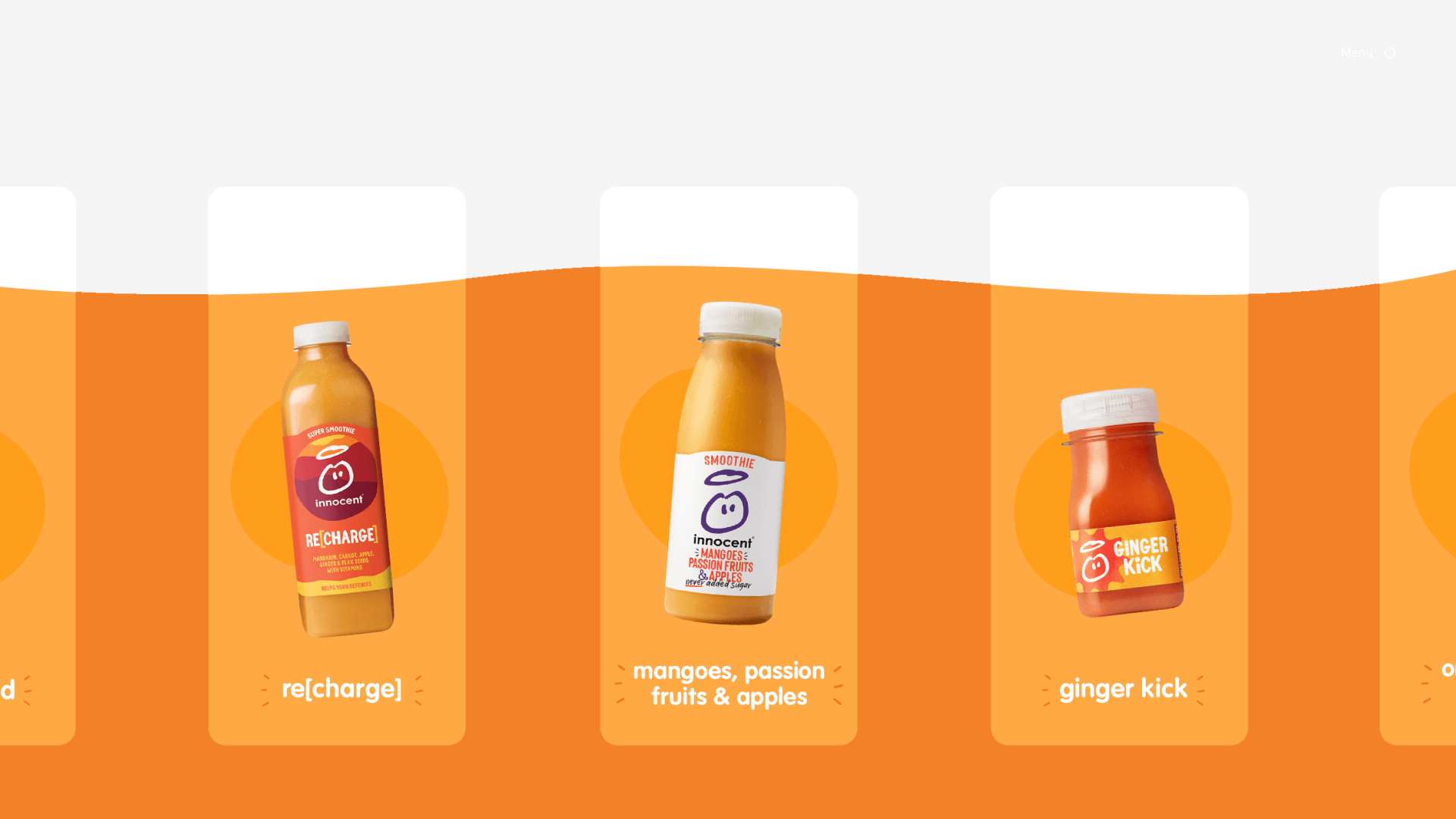
Innocent
Delighting with every touch, swipe or scroll
Drop us a line
Ready to stand out on the (digital) shelf? Get in touch today to discuss how DEPT® can help you achieve your goals.
The UK food and grocery market is forecast to grow by 10% to £211bn by 2022, according to latest research by IGD. Unsurprisingly, the pandemic has expedited the shift to online, and those retailers ahead of the game will be reaping the rewards right now. They’ll also be on the front foot to scoop up a chunk of the predicted 59% increase in revenue over the next two years for online grocery retailing. Online market share is set to increase from 6.2% to 8.9% by 2022, with shopper loyalty expected to remain with the retailers they used during the lockdown period. At £19bn, online will overtake the total value of hypermarkets for the first time, taking £1 in every £11 spent on groceries.
As retailers ride the wave of online success their focus will be on profitability. They’ll seek to grow online advertising revenue and reduce fulfilment costs. This is a particular challenge, given consumers’ demands for same-day fulfilment (or, in the case of Morrison’s partnership with Amazon, two-hour fulfilment). Click and collect services will need to become far more sophisticated to match consumer expectations. Online shopping saves customers time; not being unable to select a convenient time slot to collect and then having to wait around upon arrival will merely frustrate.
The discounters, who have been a looming threat to the big four’s market share for a while, will be focusing their attention on developing their online commerce offerings, which they’re already testing in other markets. In August 2020, Aldi secured planning approval for its 1.3 million sq ft national distribution centre in Leicestershire, indicating that it’s not far from launching a full blown e-commerce offering in the UK. In the same month, Lidl released its app Lidl Plus, offering rewards such as a weekly money saving coupons. This may well be an attempt to bridge its current e-commerce gap while it gets its ducks in line.
Supermarkets, in particular, will remember how they lost ground to discounters in the 2008 recession, so will be focusing efforts on implementing labour-saving technologies to enable competitive price investments and demonstrating value. Will this be enough to counter the predicted negative growth (88.6bn in 2019 to 89.3bn in 2022) in supermarket revenue? Discounters and online are the two main competitors they’ll be defending market share against.
The rise of D2C
And what of the surge in direct-to-consumer models FMCG manufacturers have launched during the pandemic? Analysts predict that while this was a short term coup, D2C may not continue at the COVID pace going forward. However, it’s worth noting that while D2C can open up new sales channels, its real benefit lies in brand building, data capture and developing a closer relationship with end consumers. Wise manufacturers will see these benefits and maximise the channel’s potential with advanced personalisation and enhanced CX experiences, driving loyalty and ensuring long term benefit both online and in store.
Wholesalers and food service companies have also focused on reaching end consumers, with the likes of Promocash in France and Bidfood in the UK delivering direct to customers’ homes and cutting out the middleman completely. Restaurant chain Leon started selling groceries online, with deliveries being serviced by Uber Eats and Deliveroo.
In Australia, Deliveroo is now a grocery retailer, enabling shoppers to order online and get home delivery via its ‘essentials’ store. With their advanced online capabilities and comprehensive logistics networks, delivery aggregators such as Deliveroo are well placed to branch into FMCG; convenient for end consumers and potential new competition for traditional grocery retailers.
Will we see a rise in new retailers as a result of these pandemic measures? Time will tell, but it’s clear that online success could make or break long term growth.
More Insights?
View all InsightsQuestions?
VP of Marketing, EMEA
Mellissa Flowerdew-Clarke
Gartner has released its Magic Quadrant for Web Content Management 2019, the annual review of leading CMS technology.
Often used as an indicator for enterprises seeking to review their current technology stack, this year’s quadrant has seen little movement among the leaders (Sitecore, Adobe, Acquia and Episerver), but there have been some shifts across the niche players and visionaries, particularly for SDL and Bloomreach. Magnolia has also made its first appearance in the quadrant.
Here we’ve focused on highlights for a select number of technology vendors.
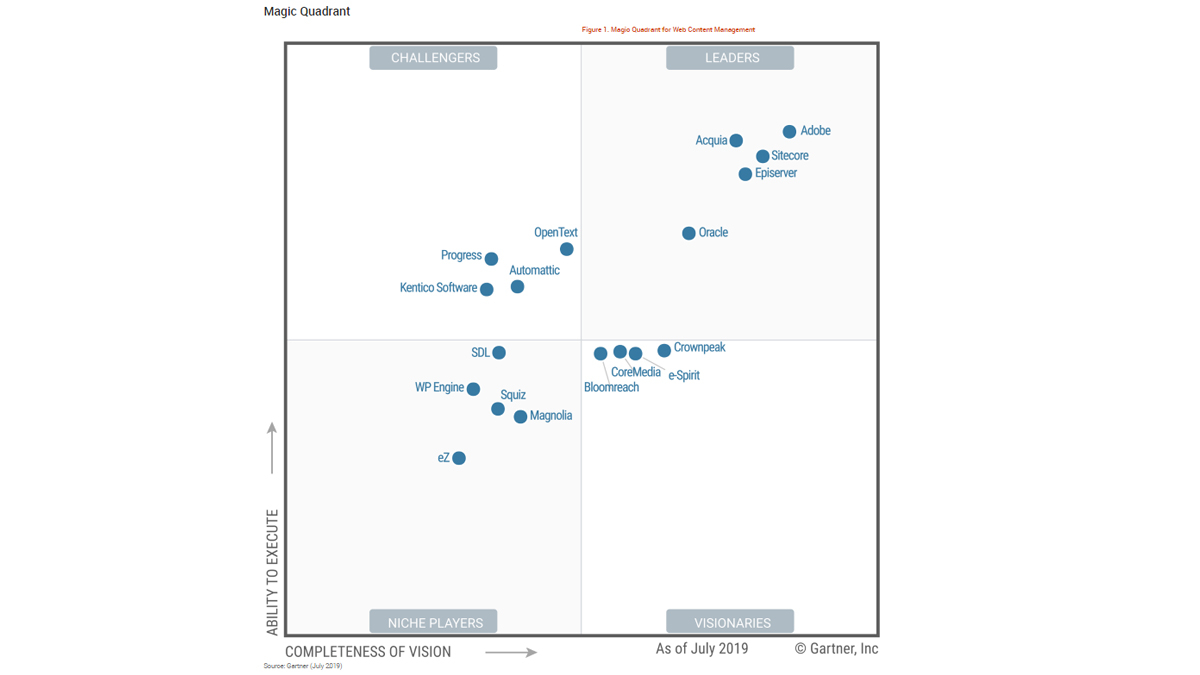
Adobe experience manager (AEM)
Regaining its leading position this year, Adobe Experience Manager remains a strong choice for organisations that have reached a certain level of digital maturity. Providing the ability to design and deliver sophisticated digital experiences across multiple touchpoints, AEM is used by global brands including Mastercard, Nissan, Sky and Dell.
Gartner advises that AEM is a pricey choice, and that some customers feel that there’s a lack of guidance from Adobe on how to get the most out of the solution. Although Adobe has launched an Experience League enablement program, it’s advisable to work with an experienced partner agency to ensure your organisation is maximising its investment. Gartner warns that AEM expertise can come with a heavy price tag, and the best teams are rarely available, so it’s advisable to do your due diligence when it comes to selecting a partner.
Sitecore
Although having dropped slightly below Adobe this year after being declared leaders in 2018, Sitecore still has strong appeal for many organisations, and its client base ranges across multiple industries and company sizes. The release of the new Sitecore KickStart, aimed at low-to-mid market, should help its popularity even further.
It’s easy to see why it’s selected by such a broad range of companies, given its architecture and JavaScript Services providing headless capabilities for multichannel delivery and content agility, teamed with its advanced personalisation abilities and intuitive interface. Notable brands using Sitecore include DEPT®’s clients Triumph Motorcycles, Johnson Matthey and Formula-E.
As with AEM, Gartner states that some customers feel that they receive below-average support from Sitecore, preventing them from truly maximising the solution. Pricing complexity has also lead to customers feeling that there is a lack of transparency, and that the cost of moving from on-premise to the cloud is high.
As with AEM, it’s advisable to work with an experienced partner agency to ensure your business is utilising Sitecore’s advanced capabilities. Sitecore has a large partner ecosystem, but the best value will come from working with a partner that has tangible experience of implementing the full breadth of Sitecore’s capabilities, whether that be setting up personalisation, upgrades or cloud migrations.
Episerver
Episerver’s product portfolio covering content management, digital marketing and commerce has helped it to maintain its position in the Leaders’ quad. Its packaging and bundling options are aligned to typical use cases, and it is highly regarded for its usability across IT and business teams. For example, event-triggering AI-based personalisation and customer journey analytics are embedded into the WCM processes, so do not require any specific process or expertise to utilise.
Customers are fans of its simple subscription pricing, which appeals to enterprises and midsize organisations alike.
Despite its leading position, brand awareness remains relatively low for Episerver. This isn’t helped by the lack of large digital agencies in its partner ecosystem, which also contributes to Episerver’s customers feeling under-supported in some regions.
Crownpeak
Crownpeak Digital Experience Management has remained stable in the quadrant, and is acknowledged for its short time-to-value for customers, due to its “low-code, component-based approach, packaged integrations, decoupled, front-end-agnostic architecture and SaaS model”.
A key differentiator for Crownpeak is its focus on digital governance and consent; for example, if it had of been implemented, its Digital Quality Management (DQM) tool could have prevented British Airways from that painful £183m data breach fine.
Support is deemed good when compared to many vendors however, as the client-base scales, it will need to grow its partner eco-system, which is small in comparison to its competitors.
Bloomreach
Surprisingly, Bloomreach has dropped into the visionary category after being rated leaders last year. Bloomreach Experience Manager (brXM) was commended for its “practical, yet powerful UI for managing complex multisite, multilingual sites,” its API-driven, open architecture, and its incorporation of AI.
Despite these strong benefits, brand awareness is relatively low, which means it’s missed off many shortlists, even when it would be a good choice. Having historically concentrated on retail and e-commerce sectors, Bloomreach is now aiming to expand into other verticals. If successful at this strategy, they should secure a spot in the Leaders’ quad again.
As with many vendors, Bloomreach’s partner ecosystem is on the small side, and due diligence is certainly advisable when seeking a partner agency to ensure they have tangible experience.
SDL
Despite being on the cusp of moving back into the Leaders’ quad last year, SDL Tridion Sites has slipped into the niche players. It remains a very strong choice for global enterprises requiring multisite, multi-lingual content distribution, due to Tridion Sites BluePrint Model and SDL’s leadership in language translation tech. Notable global brands using Tridion Sites include DEPT®’s clients Omron, Sodexo and Bourne Leisure.
It was also commended for its content APIs and GraphQL-based content delivery capabilities, which “enable the use of SDL Tridion Sites in a headless manner (in addition to its traditional use as a classic decoupled architecture).”
In recent years, SDL has focused on its translation software and services business, which means its WCM offering has taken a hit, both in regards to updating its UI and sales focus. This has been felt by existing partners, and its partner ecosystem is decreasing. Tridion Sites clients have turned to System Integrators, which is not ideal for brands who prefer to work with digital-led agencies.
Creating a WCMS shortlist?
Gartner’s Magic Quadrant for WCMS is a valuable resource for those seeking to implement a new content management solution, but there are many factors at play when selecting your technology shortlist. It’s advisable to team up with a tech-agnostic agency (such as Dept), who can advise based on your specific business requirements, and who have hands-on experience of implementing solutions for businesses within your sector or with similar challenges.
More Insights?
View all InsightsQuestions?
VP of Marketing, EMEA














